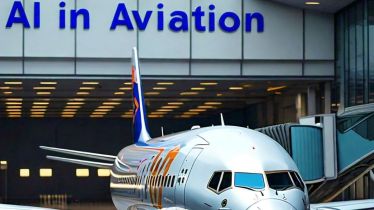As artificial intelligence (AI) is gaining momentum in every space, the aviation industry is also witnessing major technological changes. AI is now widely integrated into various aspects of airline industry solutions. From flight planning, crew management, and maintenance to customer service, AI seems to be upgrading every aspect.
As market report highlights the global artificial intelligence in aviation market size is estimated to reach $ 23 billion by 2031. Notably, in 2022, it was valued at $728.05 million. With its ability to analyse vast datasets, AI also aids in demand forecasting, dynamic pricing, and personalized marketing. This adds on to make aviation more customer-centric. In conversation with FE Techbytes, Rikant Pittie, Co-founder, EaseMyTrip, on how the aviation industry has transformed with the help of AI till now.
How is AI automating the aviation sector?
AI is revolutionizing the Indian aviation industry by enhancing operational efficiency, customer experience, and safety. Airlines are leveraging AI for predictive maintenance, ensuring timely repairs and reducing downtime. AI-driven chatbots and virtual assistants improve customer service by handling bookings, queries, and real-time updates.
Additionally, AI optimizes flight routes, saving fuel and reducing costs. Airports are adopting AI-powered facial recognition for seamless check-ins and security checks, improving passenger flow and reducing wait times.
Customer experience is key when it comes to the aviation sector. How can AI bring new experiences?
AI is redefining the aviation sector, enhancing customer experiences with precision and personalization. Airlines are using AI-driven chatbots, virtual assistants, and predictive analytics to provide passengers with instant support, smoother check-in experiences, and real-time updates. OTAs are leveraging AI and ML to personalise itineraries, simplify bookings, and enhance convenience. By analysing user preferences, OTAs curate travel options that resonate personally with travellers, while AI-powered voice and text tools make planning journeys seamless. This convergence of AI in aviation and OTAs enriches the travel experience, making each interaction more connected and user-focused.
Messaging automation is becoming a key tool in the aviation industry, how is AI playing a role in this?
Messaging automation is foundational in the aviation industry. Instead of waiting on hold or searching for flight updates, travellers can instantly get responses to common questions through AI chatbots. These bots can handle everything from rescheduling flights to tracking baggage, all through real-time messaging.
Also with AI predictive models, airlines are now able to notify passengers about potential delays, gate changes, or even suggest check-in times—keeping the entire journey smooth and informed.
AI is also integrated into Chatbots and virtual assistants. How do you think the change is beneficial for customers?
Integrating AI into chatbots and virtual assistants is the catalyst that has created a new era of travel. Instead of waiting on hold, travellers can get instant, around-the-clock help with everything from flight changes to seat selections. This approach brings a personal touch to automation—by drawing on a traveller’s past interactions, these bots can even suggest routes or preferences tailored to individual needs.
Not only does this save time, but it also puts control directly in the hands of the traveller, offering flexibility and an overall more satisfying service experience.
Can the integration of AI bring any negative impact when it comes to securing customers’ data? If yes then how?
OTAs and airlines hold data security as a top priority, recognizing the sensitive nature of the information entrusted by customers. The integration of AI brings remarkable advancements to data management. Robust encryption, stringent access protocols, and continuous monitoring ensure that AI-based solutions are designed with data security as a foundational element.
So, prioritising secure AI integration, OTAs and airlines can protect user data while enhancing service efficiency and personalization.
Follow FE Tech Bytes on Twitter, Instagram, LinkedIn, Facebook
